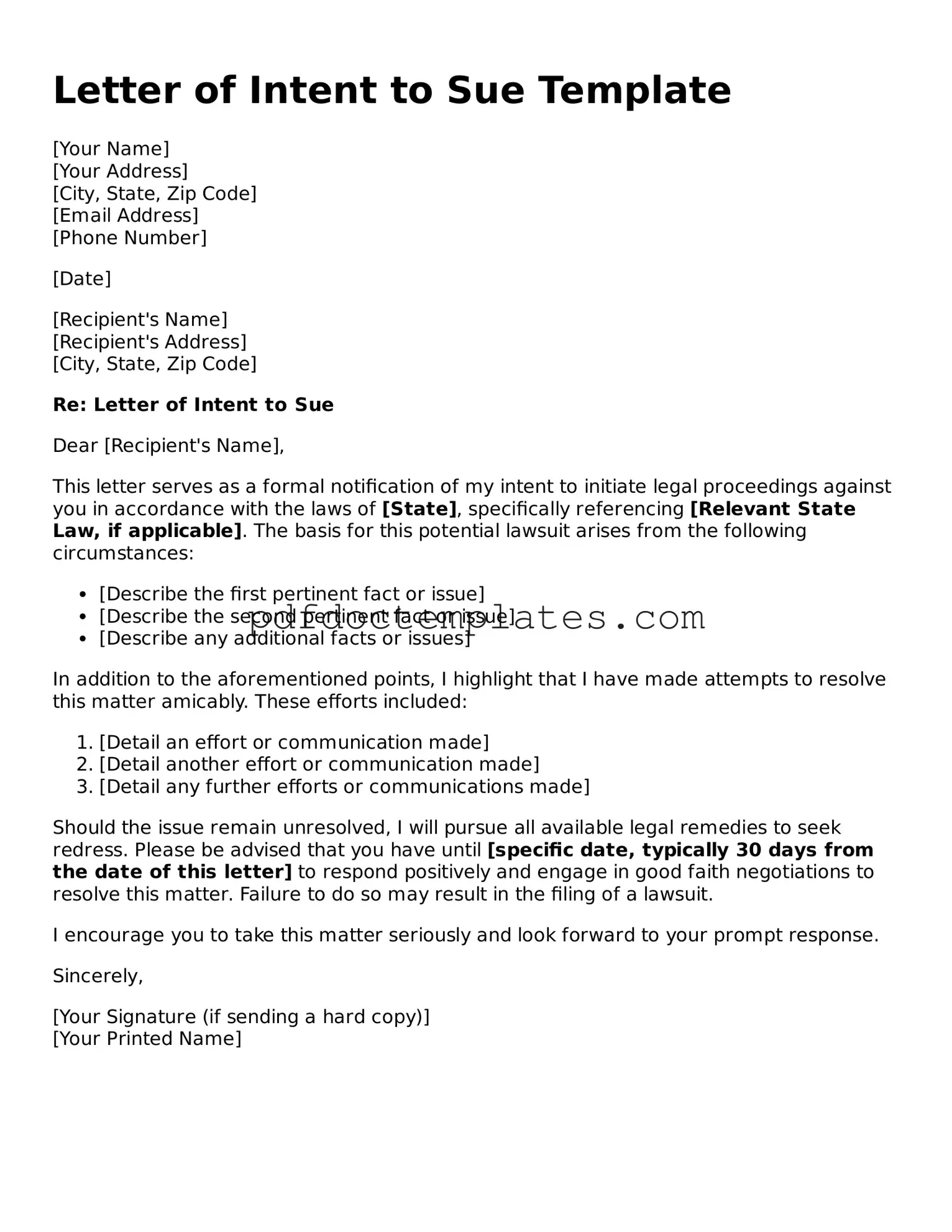Letter of Intent to Sue Template
[Your Name]
[Your Address]
[City, State, Zip Code]
[Email Address]
[Phone Number]
[Date]
[Recipient's Name]
[Recipient's Address]
[City, State, Zip Code]
Re: Letter of Intent to Sue
Dear [Recipient's Name],
This letter serves as a formal notification of my intent to initiate legal proceedings against you in accordance with the laws of [State], specifically referencing [Relevant State Law, if applicable]. The basis for this potential lawsuit arises from the following circumstances:
- [Describe the first pertinent fact or issue]
- [Describe the second pertinent fact or issue]
- [Describe any additional facts or issues]
In addition to the aforementioned points, I highlight that I have made attempts to resolve this matter amicably. These efforts included:
- [Detail an effort or communication made]
- [Detail another effort or communication made]
- [Detail any further efforts or communications made]
Should the issue remain unresolved, I will pursue all available legal remedies to seek redress. Please be advised that you have until [specific date, typically 30 days from the date of this letter] to respond positively and engage in good faith negotiations to resolve this matter. Failure to do so may result in the filing of a lawsuit.
I encourage you to take this matter seriously and look forward to your prompt response.
Sincerely,
[Your Signature (if sending a hard copy)]
[Your Printed Name]
